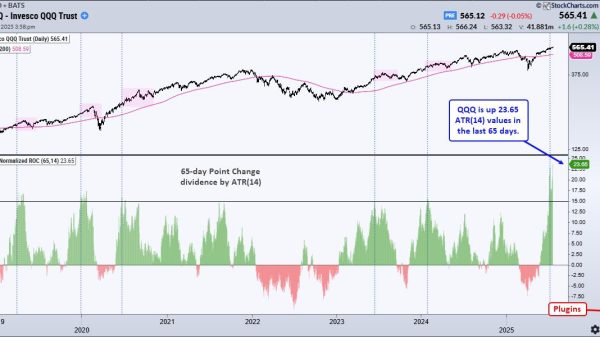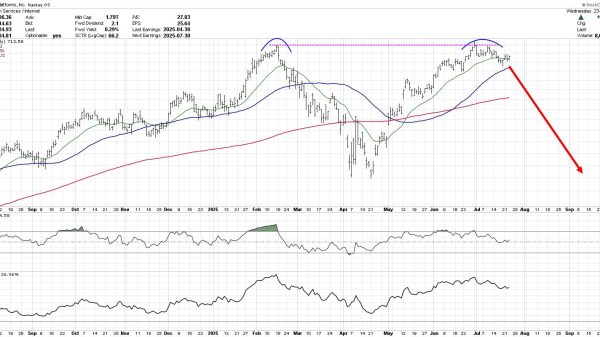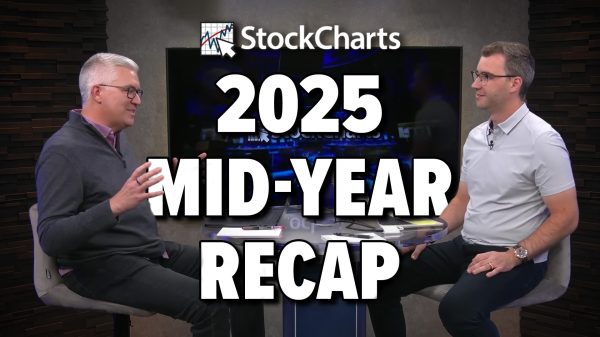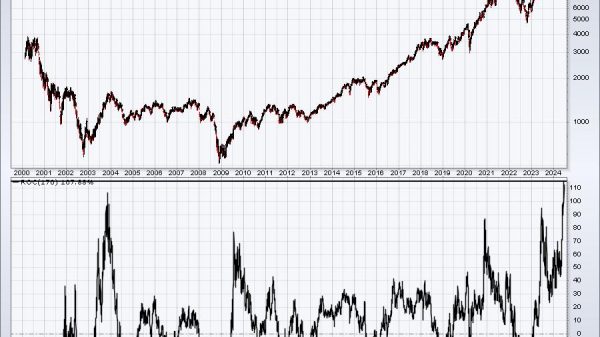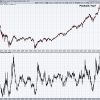A new report from IoT Analytics highlights the increasing success of IoT implementations. According to the “IoT Use Case Adoption Report 2024,” 92% of enterprises report a positive ROI from IoT use case projects, marking a 13-point increase since 2021. The accompanying research article details the top 10 IoT use cases with adoption rates, most important KPIs impacted, and implementation examples.
Key insights
IoT initiatives appear more successful than ever, as 92% of enterprises report positive ROI from IoT use case implementations, according to IoT Analytics’ 418-page IoT Use Case Adoption Report 2024. The number of IoT use cases being adopted by enterprises grew 53% between 2021 and 2024. Complexities related to IoT use case adoption appear to be easing somewhat, which appears to be fueling the adoption growth and ROI. Enterprise IoT use case investments continue to grow in 2024, but at a slower pace than in previous years. IoT Analytics presents the top 10 IoT use cases, with process automation as the #1 adopted IoT use case.Select quotes
Dimitrios Paraskevopoulos , Senior Analyst at IoT Analytics, comments that:
“With 92% of IoT projects reporting a positive ROI and adoption still going strong, it’s high time the discussions shift from “whether IoT is failing” (hint: it isn’t) to “how can we leverage the technology to improve our operations/supply chain/products”.
Top 10 IoT use cases
Status of IoT initiatives in 2024: More successful than ever before
Over 90% of IoT use case projects have positive ROI. For years, IoT Analytics has been unable to validate common claims that most IoT projects are unsuccessful, such as the following:
Cisco Survey Reveals Close to Three-Fourths of IoT Projects Are Failing It’s the last IT/OT mile that matters in avoiding Industry 4.0’s pilot purgatory Why has the Internet of Things failed?According to IoT Analytics’ research found in the 418-page IoT Use Case Adoption Report 2024 (published July 2024)—which is based on a survey of 200 end users of IoT applications and analyzes 27 IoT use cases—91.7% of organizations have seen ROI from the different IoT use cases they adopted, a 13-percentage-point climb from similar IoT Analytics research in 2021. Further, compared to 2021, 53% more IoT use cases are being adopted by organizations (either in the process of rolling out a use case or have already completed a project), signaling a healthy state of IoT.
IoT project complexity has reduced. In 2021, many respondents to a similar IoT use case survey noted the need for proofs of concept and testing since IoT projects and their technical setups can be complex. However, in 2024, the complexities of usage and onboarding/setup of IoT use case projects ranked 5th and 6th, respectively, in terms of challenges. In IoT Analytics’ opinion, this drop in perceived complexity appears to largely fuel the strong growth in IoT use case adoption.
Restrained IoT spending growth in 2024. 51% of respondents say that their organizations plan to increase their spending in IoT use cases in 2024 compared to 2023; however, they plan to do so by a lower amount than the previous year. According to IoT Analytics’ IoT Software Adoption Report 2023, companies increased their IoT use case spending, on average, by 8.4% in 2023, while in 2024, respondents stated their companies’ budgets for IoT use cases were increasing 2% on average.
Additional insights from the IoT Use Case Adoption Report 2024. 22% of respondents are planning to increase investment in IoT use cases by more than 10% in 2024 (vs. the previous year). In 2021 (for 2022), that share was at 29%, constituting a 7-percentage-point decrease.
The 10 most adopted IoT use cases
Most IoT use cases serve smart operations. The top 10 IoT use cases in 2024 have changed quite a bit since 2021; however, the distribution of use cases by category within the top 10 remains the same: 6 smart operations use cases, 3 smart supply chain use cases, and 1 connected product use case.
Below are the top 10 use cases in 2024, including how IoT Analytics defines them and which organizational KPIs are most affected by each. Also provided are select quotes and implementation examples for some of the use cases from the report.
1. Process automation
Nearly 3/5 of organizations have adopted process automation. Leading as the most adopted IoT use case at 57.5% of organizations is process automation. This is a stark rise from the 33% adoption rate seen in the 2021 IoT use case report, where it was the second-ranked use case.
Process automation enables companies to streamline and automate processes by integrating interconnected devices and sensors with both new and legacy equipment, such as PLCs and IPCs. This use case helps to reduce the need for manual intervention, increasing efficiency, minimizing errors, and enhancing safety. Technologies such as IoT sensors and edge computing play a crucial role in enabling real-time data collection, analysis, and decision-making. By incorporating IoT into existing systems, companies can optimize workflows, improve production quality, and implement predictive maintenance.
Most important KPI affected: The top KPI affected by process automation is labor efficiency. On average, a major rollout of this use case improves labor efficiency by 8.2%.
Implementation example
When Burnley Brewing, an Australia-based craft brewery, approached its maximum capacity as demand for its beverages grew, it decided to expand. In doing so, it decided also to include automation in its processes. Burnley partnered with Australia-based contract electrical and engineering firm Bon Industry, which leveraged US-based industrial automation technology provider Rockwell Automation’s FactoryTalk Craft Brew—a process management and automation system developed specifically for the brewing industry. IoT sensors, PLCs, and other action-enabling hardware were placed throughout the brewing process, all connected to FactoryTalk Craft Brew for data collection and process actioning. As a result of this solution, Burnley Brewing lessened the labor of its brewers across the brewing process, from milling and mashing grain at the beginning to controlling fermenters and conditioning tanks near the end.
2. Quality control and management
Quality control and management climbed 5 places since 2021. 55% oforganizations have adopted IoT-based quality control and management. In 2021, this use case was 7th in adoption at 30%, which marks a significant climb. A reason for this climb could be its quick payoff: 53% of companies that have implemented this use case reported amortization in less than 24 months.
Quality control and management allows companies to monitor critical factors like temperature, humidity, and pressure during production. This real-time data allows for immediate detection of quality deviations, enabling swift corrections to prevent defects. IoT solutions can be integrated into both new and legacy equipment, with machine learning analyzing the data to predict potential issues before they arise.
Most important KPI affected: The top KPI affected by quality control and management is, no surprise, product quality. On average, a major rollout of this use case improves product quality by 4.6%.
3. Energy monitoring
Companies plan to invest more in energy monitoring than any other smart operations use case. Adoption-wise, energy monitoring has risen to 55%—up from 20% in 2021.It is the rising star among IoT use cases, as new sustainability strategies and high electricity prices (especially in Europe) have led companies to use IoT devices and sensors to closely monitor individual assets’ energy consumption. Within the smart operations category, it has the highest expected investment increase between 2023 and 2024 at 3.5%.
Most important KPI affected: The top KPI affected by energy monitoring is costs. On average, a major rollout of this use case reduced related costs by 8.1%.
4. Real-time inventory management
Real-time inventory management leads smart supply chain use cases. 54% of respondents shared that their companies have either fully rolled out or are rolling out real-time inventory management. With the supply chain issues and economic uncertainty following the COVID-19 pandemic, companies have sought smarter inventory management solutions to prevent stockouts and overstocking. In fact, adoption of this use case climbed 35 percentage points between 2021 and 2024, and within the smart supply chain category, it is expected to receive the largest investment increase between 2023 and 2024 at 5.7%.
Most important KPI affected: The top KPI affected by real-time inventory management is the return on equity (ROE)/return on capital employed (ROCE). On average, a major rollout of this use case improves ROE/ROCE by 8.1%.
Implementation example
In 2022, Tyson Foods, a US-based multinational food company, wanted to automate time-consuming manual processes like inventory counts. The company already used computer vision for many of its processes but sought to incorporate machine learning to improve operational efficiency, among other goals. Leveraging AWS’s Panorama and SageMaker services, Tyson Foods implemented a computer vision-based, real-time inventory management system to deploy a detection model that automated chicken tray counting and identified faulty carriers. This real-time inventory management solution saved Tyson Foods an estimated 15,000 labor hours annually in each facility and helped it avoid over- or underproduction.
Additional insights from the IoT Use Case Adoption Report 2024
The report dives into the challenges companies face when implementing IoT use cases, conveyed by industry, region, and company size. Looking at the process manufacturing industry as an example, 46% of respondents, on average, marked “Integration into legacy systems” as a severe or major challenge, making it the top challenge faced by that industry. “Privacy concerns” and “IT and data security concerns” ranked as the 2nd and 3rd top concerns.
5. Supply chain track and trace
Most adopters see fast amortization with supply chain track and trace. Riding just behind real-time inventory management is supplychain track and trace, also at a 54% adoption rate. Approximately 60% of respondents experienced amortization in less than 24 months—second of all IoT use cases in this regard.
Connected sensors, GPS devices, LPWAN, and satellite technologies—all part of IoT’s contribution to supply chain track and trace—help companies monitor and manage the movement of goods throughout their entire supply chain by providing real-time visibility into the location, condition, and status of shipments. Advanced analytics further enhance supply chain operations by predicting disruptions and optimizing routing. With this use case, companies can reduce losses, improve delivery accuracy, and enhance compliance with regulatory requirements.
Most important KPI affected: The top KPI affected by supply chain track and trace is on-time delivery. On average, a major rollout of this use case improves on-time delivery by 8.5%.
Adopter quote
“The drivers drive with more foresight, the wearing parts last longer, the number of accidents goes down, the diesel consumption goes down—the stress is less.” – Oliver Nocke – Fleet Manager, Roman Mayer Transport & Logistik (via Samsara)
6. Operations planning and scheduling
Energy companies expect more investment in operations planning and scheduling. 53% of respondents shared that their respective companies have either rolled out or are currently rolling out operations planning and scheduling tools. Approximately 75% of companies in the energy sector are planning to increase investment in this use case in 2024, with an average increase of 5.5%.
By integrating IoT technology with planning systems, companies gain up-to-the-minute insights into production status, machine availability, and workforce capacity, allowing for dynamic adjustments to schedules, which helps reduce downtime and ensure optimal use of assets. Algorithms can further analyze the data to predict demand, identify bottlenecks, and suggest the most efficient scheduling options, resulting in improved operational efficiency and reduced lead times. Many (but not all) of the rollouts are tied to existing planning and scheduling software, such as manufacturing execution systems in the manufacturing sector, energy management systems in the energy sector, or building management systems in the buildings sector.
Most important KPI affected: The top KPI affected by operations planning and scheduling is labor efficiency. On average, a major rollout of this use case improves labor efficiency by 7%.
7. On-site facility track and trace
Wholesale and retail expected to lead in on-site facility track and trace investment. Half of the organizations in the survey have adopted some form of on-site facility track and trace. Of those companies in the wholesale and retail segment that are testing or adopting this use case, 56% expect to increase investment, with an expected increase of 13% on average. Second to them are companies in the healthcare industry at 55%. On-site facility track and trace makes sense for these two segments, as tracking and locating products within a warehouse or equipment in a healthcare facility can aid in timely shipments or urgent medical needs.
Most important KPI affected: The top KPI affected by on-site facility track and trace is on-time delivery. On average, a major rollout of this use case improves on-time delivery by 7.8%.
Adopter quote
“Track and trace is a risk mitigation initiative for retailers, making it easier to identify products in the event of a recall, reducing exposure to costly lawsuits and improving overall compliance.” – John Merrill – CFO, ReposiTrak, February 14, 2024
8. Asset performance optimization
Asia-Pacific companies to lead in asset performance optimization investment growth. Coming in with an adoption rate of 48% is asset performance optimization. This use case is expected to see a slight decrease in investment in 2024, with Asia-Pacific companies being the only ones foreseeing increased investment by 5% on average.
IoT for asset performance optimization is the modern version of asset performance management, which describes methods of capturing and integrating data, visualizing it, and analyzing it to improve the reliability and availability of physical assets. It combines state-of-the-art data-capture and integration tools (like IoT gateways) and software tools (like IoT platforms) to analyze how assets can operate and be maintained at optimum levels (e.g., optimized asset speed settings, optimized material input settings, or optimized maintenance intervals).
Most important KPI affected: The top KPI affected by asset performance optimization is overall equipment effectiveness (OEE). On average, a major rollout of this use case improves OEE by 9.5%.
Implementation example
When US-based Longroad Energy acquired a 145-megawatt wind farm, it realized the turbines were not yielding as much output as expected due to incorrect setup. Longroad partnered with WindESCo, a US-based renewable energy performance analytics company, which implemented its Swarm System to acquire real-time turbine data, such as angle and energy generated. Data collected by the Swarm System are stored on a cloud server, which feeds into an analytics platform that determines the optimal angles and other turbine settings, optimizing the performance of these assets. As a result, Longroad Energy experienced a 2.5% increase in annual energy production and an annual revenue increase of $430,000.
9. Remote asset monitoring
Remote asset monitoring drops from most adopted use case while seeing strong growth. Approximately 48% of respondents reported adopting remote asset monitoring, up from 34% in 2021. Interestingly, this use case was the most adopted in 2021. At that time, IoT Analytics noted that remote asset monitoring was the cheapest and easiest to set up due to its simplicity compared to other use cases. With other, more complex use cases surpassing remote asset monitoring while it grew significantly, it becomes even harder to believe that IoT is failing. Rather, companies have realized the benefits of IoT use cases and invested more in them.
Most important KPI affected: The top KPI affected by remote asset monitoring is costs. On average, a major rollout of this use case reduced costs by 6.6%.
Adopter quote
“We have millions of sensors collecting over 5 trillion rows of data that our AI models, combined with our conventional models used to monitor equipment 24 hours a day, 7 days a week, alerting engineers to anomalies from a distance.” – Wael Sawan – CEO, Shell plc, February 01, 2024
10. Location tracking
Location tracking is the top connected products use case. Approximately 45% of companies in the survey have adopted location tracking. It is also the only connected product use case to make this list of top 10 IoT use cases. IoT location can be applied across various environments, including warehouses, factories, and outdoor work sites. The location data gathered from the machines or devices help companies locate their equipment and personnel, optimize routing, improve asset utilization, and enhance safety. Tracking the location of an asset can also be beneficial to both the vendor of the products (e.g., by understanding usage patterns) and to the user (e.g., by finding a lost item or by mitigating theft).
Most important KPI affected: The top KPI that is affected by location tracking is revenue. On average, a major rollout of this use case improves revenue of the company selling the connected product by 1.6%.
Additional insights from the IoT Use Case Adoption Report 2024
The report shares the top KPIs that respondents’ companies use to measure the success of their IoT strategies by industry. Zooming in on the energy sector as an example, 88% of energy companies, on average, put high importance on decreasing the average time it takes to detect cybersecurity incidents.
Classifying IoT use cases
When looking at IoT use cases, IoT Analytics has four ways to classify them:
By endpoint By functionality By application area By business objectiveIn the IoT use case adoption report, IoT Analytics used a mix of functionality and application area. For example, prediction is a functionality, and maintenance is an application area, resulting in predictive maintenance.
Grouping IoT use cases
The report covers 27 IoT use cases and groups them into three categories: Smart operations, smart supply chains, and connected products. The list of the 27 IoT use cases can be found on the report page.
The post The top 10 IoT use cases appeared first on IoT Business News.






